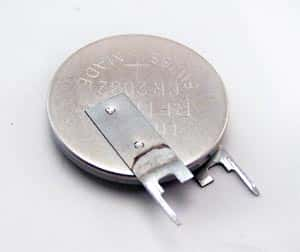Lithium-ion batteries, when used to drive automobiles, can operate reliably over long periods, but require considerable care. That means not operating them to the extreme ends of their state of charge or SOC. With passage of time and usage, the capacity of a lithium ion cell changes, and therefore, each cell in the system has to be managed so that it remains within its constrained SOC.
As vehicle operation requires generating as much as 1000 V or higher, tens or hundreds of cells are necessary, configured in series and parallel strings, to provide sufficient power for the vehicle. The battery electronics has to operate at these high voltages, while rejecting common mode voltage effects, and differentially measuring and controlling each cell in the strings. At the same time, the electronics has to transmit the information from each cell in the battery stack to a central point for processing.
High-power applications such as vehicles employing a high voltage battery stack impose tough conditions, including operation with wide operating temperatures and significant electrical noise. Therefore, the battery management electronics has to maximize its operating range, safety, lifetime, and reliability. At the same time, it has to minimize the weight, size, and cost.
Linear Technology has made steady advances in battery cell monitoring, increasing the life and reliability of battery packs in automobiles, and enabling high performance. For further improving the safety and reliability of full battery systems, Linear Technology is moving towards wireless Battery Management Systems or BMS.
Monitoring Batteries
Each LTC68xx IC from Linear Technology can monitor up to 12 Li-ion cells and they can be connected in series to enable simultaneous monitoring of every cell within a long, high voltage battery string. This enables precision battery management in hybrid/electric vehicles, electric vehicles, and other high power, high voltage battery stacks.
For instance, each LTC6811 has two built-in serial interfaces operating at 1 MHz each, one SPI interface for connecting to a local microprocessor, and the proprietary 2-wire isoSPI interface. Two communication options are possible with the isoSPI interface—you can connect and address multiple devices in parallel to the BMS master, or connect multiple devices in a daisy chain to the BMS master.
Wireless BMS
When employing a wireless BMS, a wireless connection interconnects each module rather than the twisted pair of the isoSPI. For instance, Linear Technology combines its SmartMesh wireless mesh networking with the LTC811 battery stack monitors to replace the traditional wired connections between the battery packs and the battery management system. This is a significant breakthrough offering a huge potential for lowering costs, reducing wiring complexity, thereby improving the reliability for large multicell battery stacks for electric and hybrid vehicles.
Automakers are ensuring the safety and reliability of their electric and hybrid vehicles by addressing the potential mechanical failure of connectors, cables, and wiring harness, as these have to operate in high-vibration automotive environments. Until now, automakers were under the impression that wireless systems would be unreliable in the metal and high-EMI surroundings within a vehicle. With SmartMesh networking, the interconnect system has proved to be truly redundant.

